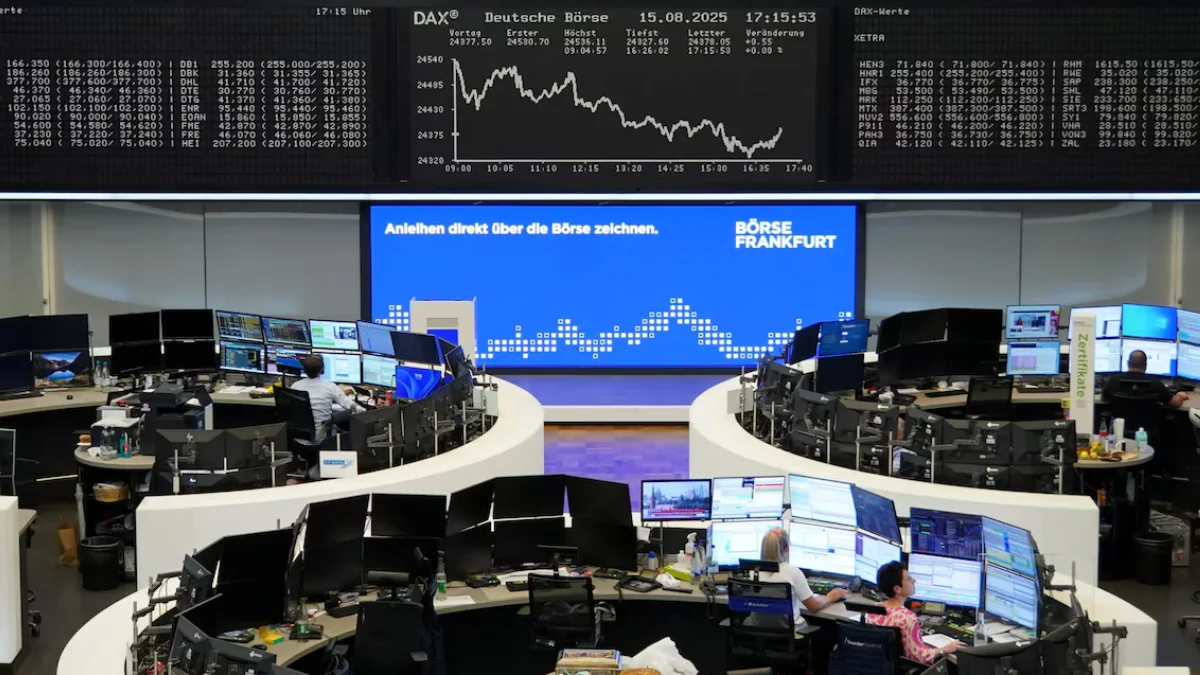Necessary Always Active
Necessary cookies are required to enable the basic features of this site, such as providing secure log-in or adjusting your consent preferences. These cookies do not store any personally identifiable data.
|
||||||
|
||||||
|
||||||
|

European stock markets found their footing on Wednesday as the recent technology-driven volatility began to ease. Global markets slipped for several days as the tech selloff in Asia spread worldwide, but European indices have now started to stabilize. According to Reuters, the pan-European index, STOXX 600, rose by 0.2% after an early 0.4% drop because of being weighed down by tech and defense stocks. Moreover, Asian markets were also weak after the NASDAQ fell 1.5% on Tuesday.
NASDAQ futures were down just 0.2% on Wednesday, indicating a more stable opening. According to analysts, the tech selloff wasn’t driven by one specific event. It was caused by several factors coming together like worries about high valuations, a shift toward safer assets, and increasing pressure from U.S. President Donald Trump on the tech sector.
Ben Laidler, head of equity strategy at BRADESCO BBI, said, “I think we were priced for perfection in the U.S. and there was a quite a lot of complacency in markets, so some summer volatility should have been expected.“
Although European markets have started to stabilize, Asian markets continued to fall as the tech selloff sent global ripple effects across the region. Japan’s Nikkei 225 slipped 1.8%, while Hong Kong’s Hang Seng dropped 1.5% as technology stocks remained under pressure.
South Korea’s KOSPI index, which includes major tech firms like Samsung and SK Hynix, fell to 2.1%. The ongoing weakness highlights how the tech-led selloff hits Asia and Europe differently, with the burden falling more heavily on markets with a larger share of technology companies.
Much of the current market uncertainty stems from investor caution ahead of Powell’s speech at the Jackson Hole Economic Symposium. Federal Reserve Chairman Jerome Powell’s upcoming remarks are being closely watched for signals about future interest rate policy, particularly as markets have been volatile amid mixed economic data.
The speech comes at a crucial time as investors try to gauge whether the Federal Reserve will continue its current monetary policy stance or make adjustments based on recent economic developments. This uncertainty has contributed to the cautious trading atmosphere across global markets.
The global markets fall ahead of Jackson Hole symposium reflects widespread anticipation of potential policy shifts. The annual gathering of central bankers and economists in Wyoming has historically been a venue for significant policy announcements that can move markets substantially.
Investors are particularly focused on any comments Powell might make about inflation trends, employment data, and the overall economic outlook. These factors could influence the Federal Reserve’s decision-making process for upcoming meetings and interest rate adjustments.
While technology stocks showed signs of recovery in Europe, the sector remained volatile globally. European tech giants like ASML Holding and SAP managed to post modest gains, helping to stabilize the broader indices. However, semiconductor companies continued to face headwinds from ongoing supply chain concerns and geopolitical tensions.
Banking stocks provided some support to European markets, with major lenders posting gains as investors rotated into more traditional value sectors. Energy companies also contributed positively, benefiting from stable oil prices and improved sentiment.